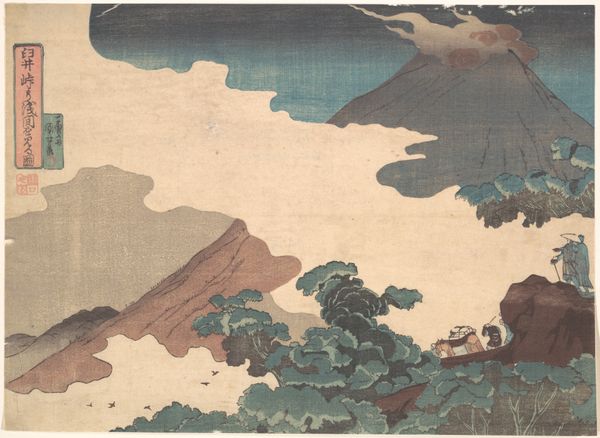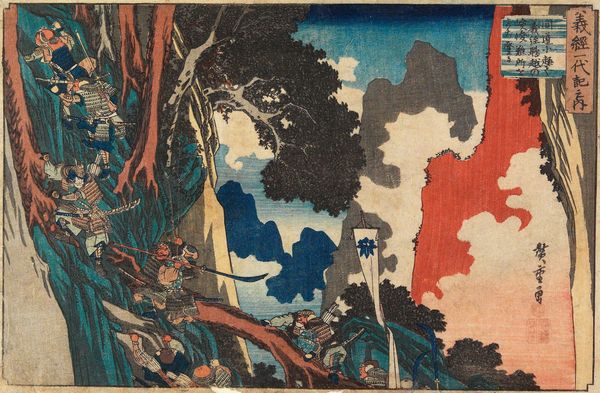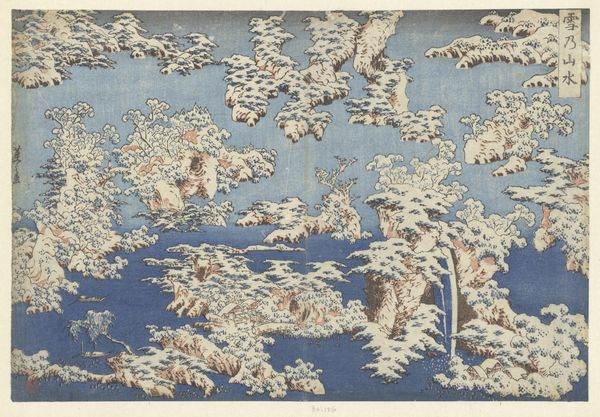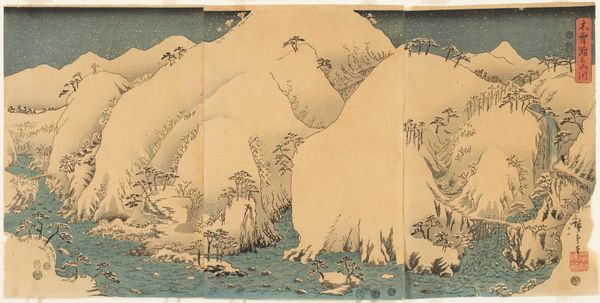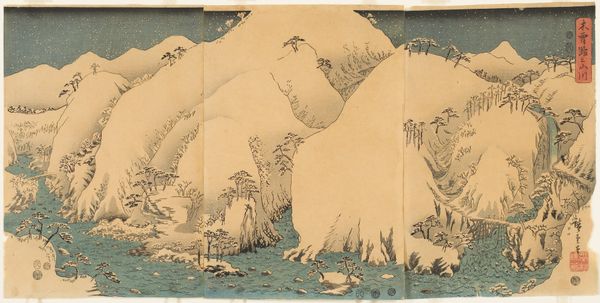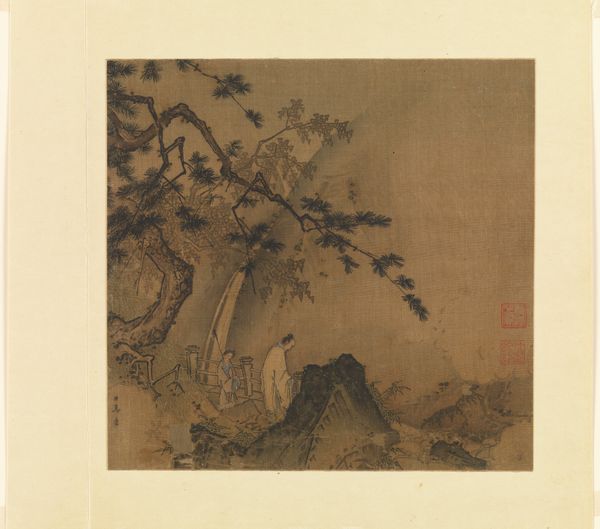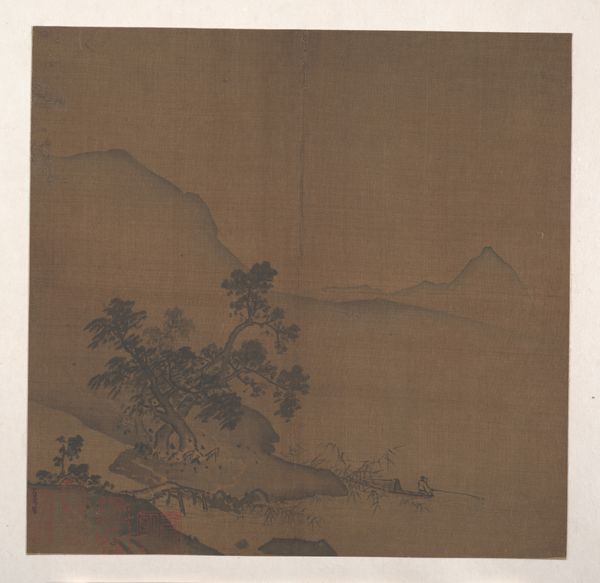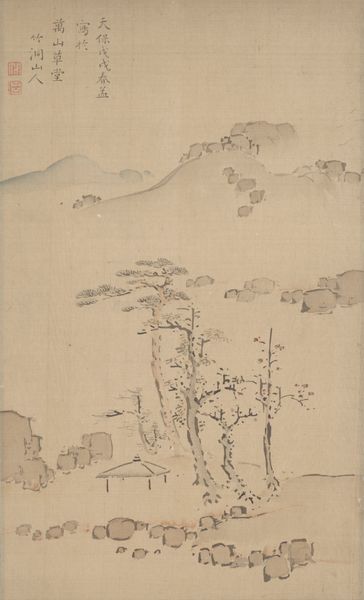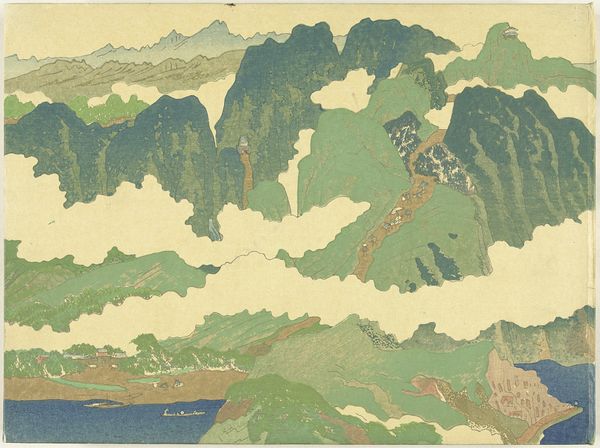
View of Mt. Asama from the Usui Pass 1840 - 1860
0:00
0:00
print, gouache, woodblock-print
#
gouache
#
water colours
# print
#
gouache
#
asian-art
#
landscape
#
ukiyo-e
#
woodblock-print
#
japanese
Dimensions: H. 9 5/8 in. (24.4 cm); W. 14 1/16 in. (35.7 cm)
Copyright: Public Domain
Editor: Here we have Utagawa Kuniyoshi's woodblock print, "View of Mt. Asama from the Usui Pass," created sometime between 1840 and 1860. There's something about the small figures dwarfed by the landscape that creates a feeling of vulnerability. What do you see in this piece, considering the context of its creation? Curator: That sense of vulnerability you identify is crucial. Consider this print within the context of the late Edo period. Kuniyoshi, along with other Ukiyo-e artists, was often subtly critiquing the rigid social hierarchy and growing economic disparity through their art. The small figures, indeed, could represent the common person, burdened by their journey and almost swallowed by the vastness of nature and, metaphorically, the oppressive system. How might the landscape itself contribute to this reading? Editor: Well, the mountain is imposing, definitely a strong presence. But there’s also a sense of beauty in the landscape, almost indifferent to the plight of the travelers. Is it fair to assume the landscape can be indifferent? Curator: Precisely! Nature, here, is not romanticized in a Western sense; it is a force, powerful and unyielding. Think about the socioeconomic pressures of the time—famine, heavy taxation, and strict class divisions. Kuniyoshi cleverly uses the landscape not merely as a backdrop but as a symbolic representation of the societal forces acting upon these individuals. Does that change how you see the smallness of the figures? Editor: It does. Instead of just being picturesque, they become symbols of resistance or perseverance against those overwhelming odds. Curator: Exactly. And notice the deliberate choices in color and composition. The subdued tones and the positioning of the figures – almost hidden within the trees – subtly amplify the message of a population struggling to survive within a complex and challenging social framework. The seemingly serene landscape contains a potent commentary on power dynamics. Editor: So, the beauty and scale of the print mask social critique. I hadn't thought about the landscape as a stand-in for the powers that be! Curator: Indeed. This piece is more than a scenic view; it’s a reflection of social realities subtly woven into the fabric of everyday life. This intersection between art and society constantly provides a fresh viewpoint to learn. Editor: Definitely. I'll never look at a landscape the same way again.
Comments
No comments
Be the first to comment and join the conversation on the ultimate creative platform.
